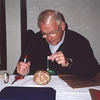This drawing shows a "plume" of hot material rising from the interior of a planet.
Plumes
A mantle plume is a bubble of material which rises to the lithosphere from the deep interior of the planet. The plume is the red portion shown in the drawing to the left. Such plumes are thought to form when a portion of the deep mantle is
heated to several hundred degrees hotter than its surroundings. This portion
of the mantle is now less dense than its surroundings and begins to rise.
As it nears the surface, the plume may take on a mushroom-like shape, as shown here. The buoyant plume may push the surface upward, forming a
rise. It also begins to generate magma (deep inside the planet the pressure was too great to allow the material to melt) some of which escapes to the surface to form volcanoes, lava flows, and rift valleys. Rises like this may be found on Venus and Mars.
Hot plumes which rise from the interior to the surface are part of a planet's cooling process.
You might also be interested in:
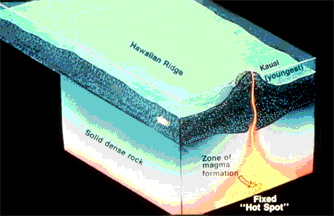
The Hawaiian Islands are an example of the way some volcanoes are made. A rising hot plume of material makes it's way to the lithosphere of the Earth from the deep interior, and erupts material unto the
...more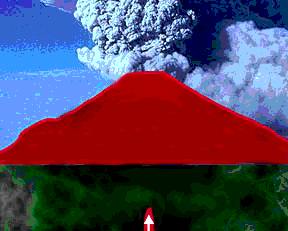
Volcanoes form when hot material from below risesand leaks into the crust. This hot material, called magma, comes either from a melt of subducted crustal material, which is light and buoyant after melting,
...more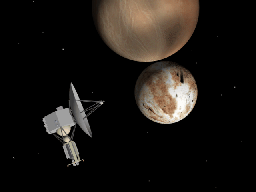
AU stands for Astronomical Units. Distances in space are too large to measure in Earth standards like miles or kilometers. For distances too large to measue in AU, we use light years. A light year is the
...more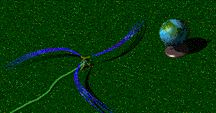
The solar wind is formed as the Sun's topmost layer blows off into space carrying with it magnetic fields still attached to the Sun. Gusts and disturbances form in the solar wind associated with violent
...more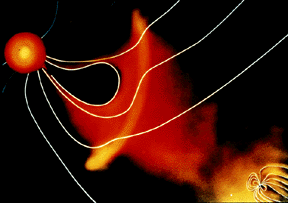
For a planet to be affected by a blob of material being ejected by the sun, the planet must be in the path of the blob, as shown in this picture. The Earth and its magnetosphere are shown in the bottom
...more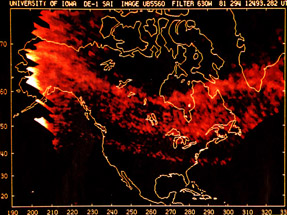
The aurora we are most familiar with is the polar aurora. This is what people are referring to when they speak of the northern or southern lights. But there are other less-known auroral activity, such
...more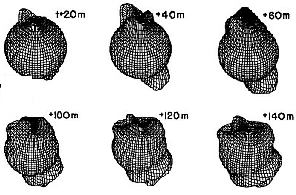
This figure shows the effect of the aurora on the atmosphere. When FAC's enter the atmosphere and create the aurora, they warm the atmosphere impulsively. This impulse travels throughout the atmosphere
...more



